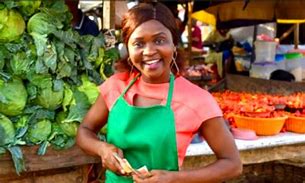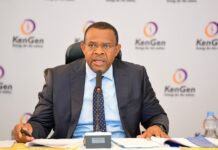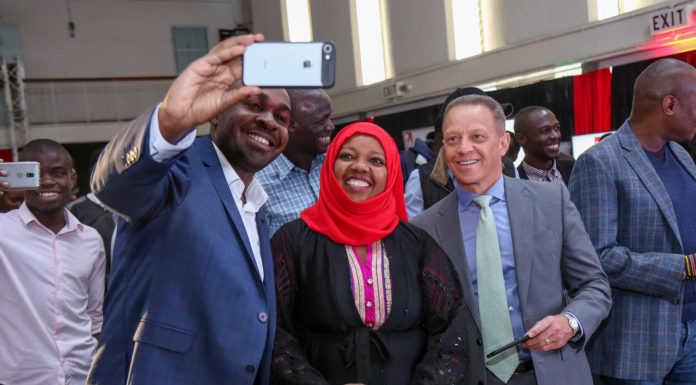|
Movement across Africa’s borders – crucial for intra-country trade – is a challenge for both people and goods as countries have varying regulations, some prohibitive
|
|
Theatre Artist and entrepreneur, Gathige Maina, went on a caravan from east to southern Africa, to attend a trade forum and find out how easy it is for young people to move across Africa’s borders, an anticipated benefit of the African Continental Free Trade Area. He was pleasantly surprised.
Movement across Africa’s borders – crucial for intra-country trade – is a challenge for both people and goods as countries have varying regulations, some prohibitive. Mr. Maina, founder and director of Youth Motion, a Kenyan organization for the youth, could not bear the lockdown imposed at the onset of the COVID-19 pandemic in 2020 which had him engaging with other young people online. A hot discussion topic was the launch of the African Continental Free Trade Area (AfCFTA). Mr. Maina was surprised about how little youth knew about the continental free trade agreement which entered into force in May 2019. “Cross border movement speaks to the youth because it is the young people who are go-getters and take the risk of moving from one region to the other in search of better opportunities,” said Mr. Maina, explaining that the AfCFTA is opening the market in Africa and young people need to take the abundant opportunities available for trade, education and cultural exchange. On the road to the AfCFTA Youth Motion Kenya, created the AfCFTA Kazini Caravan, a mobile advocacy initiative to create awareness about the AfCFTA to youth in Kenya and the rest of Africa. AfCFTA Kazini is in the Kiswahili language which translates to ‘AfCFTA at Work’. The AfCFTA now is the largest free trade area in the world bringing together 55 countries, with a population of 1.3 billion people and a combined GDP of approximately US$3.4 million. The AfCFTA will boost intra-African trade by eliminating trade barriers through Protocols on Trade in Goods and Services, Investment, Intellectual Property Rights and Competition Policy. Youth Motion travels across borders by road from one African country to the other to give a testimony that movement across Africa is indeed possible and it should be embraced now to enable intra- African trade, said Mr. Maina. Through splash mobs and visits to art and cultural centers, and University venues, Youth Motion, uses visual, performance and fine art, music, poetry, theater, drama, rap and spoken word to disseminate messages about the AfCFTA. In addition, the organization uses African Culture, characterized by dressing, weaving and long distance trade, in awareness raising. The maiden caravan went from Nairobi to the IATF in Durban through Dodoma, Lusaka and Gaborone covering five countries along a 9300 KM stretch. IATF is a trade show that that provides a platform for sharing trade, investment and market information and enables buyers and sellers, investors and countries to meet, discuss and conclude business deals. Mr. Maina said the second edition of the caravan that will cover about 20 countries spread across 5 of the 6 regions of Africa will culminate in the Intra African Trade Fair (IATF) in Cairo Egypt in November. At the time of this interview, the Caravan had made its way to Addis Ababa, Kigali and Kampala. “The conversation about the AfCFTA has not been led by young people themselves, it has been led by esteemed institutions like the ECA and the AfCFTA Secretariat which is great, but how about having that discussion initiated by young people for other young people and urging them to take up action in a unique way such as the Kazini Caravan,” he said explaining that the caravan proved that cross border movement was possible but could be improved. “We felt that while the AfCFTA bus has long left the station, the youth can do something beyond the ordinary conference or workshop to discuss the AfCFTA and we thought of the caravan idea to take an artistic route to promoting the AfCFTA,” said Mr. Maina, adding that, “The African Union’s theme for 2021 was Arts, Culture & Heritage and this played a critical role in propelling our maiden artistic caravan from Kenya to South Africa where we got an audience with the ECA’s Regional Integration and Trade Division, the Africa Trade Policy Centre and the AfCFTA Secretariat with whom we are collaborating in shaping the 2023 caravan from Kenya to Egypt.” Free movement, free youth Mr. Maina said Africa is rich in culture with over 2000 languages and diverse heritage and the movement of Africans across borders will promote that heritage. The creative industry harbours over 50% of youth in Africa and with the approval of the Protocol on youth and women of the AfCFTA, the youth will be meaningfully enabled in the trade arena. “The caravan provided the best vehicle to deliver the message on the free movement of people under the AfCFTA,” he said. “The youth are the ones to breathe life into this framework because the free movement of people can just be on paper but if we partake that movement ourselves then we would be making it work and it would go beyond it being captured on paper.” The Protocol on Women and Youth in Trade is currently being developed. Protocols are ushering a continental market with free movement of goods, services, capital, and people, as set out in the Agreement establishing the AfCFTA and the African Union’s Agenda 2063, The Africa We Want. “Trade is a unifier, “ said Mr. Maina, adding that, “Trade gives opportunities for young people to discover themselves and make their voice count.” For the youth to effectively benefit from intra-african trade, they need entrepreneurial skills, financial literacy and access to capital, says Jullie Kubia, Marketing and Market research director of Africa Field Agents, research company specializing in the African market. “We need policies that promote young people to thrive, through mentorship, skills building and business development services,” Kubia said, emphasizing that the cost of digital access prohibits young people who don’t have much money to begin with, to thrive. “Young people are tech-savvy. But, to take full advantage of the digital space to promote their businesses requires affordable infrastructure – Internet access is costly, Wi-Fi is costly, bundles for on-the-go access are also costly and so is energy.” The Art of Trade Youth Motion have also launched another initiative to promote the AfCFTA. AfCFTArt is a series of art competitions targeting talented young student artists from 20 countries across five regions of Africa.The artists submit works of art and culture on AfCFTA through short films, music, painting and digital designs. “We have done talks with students across various countries on the contest and entries opened in July and will close in September 2023. We have an award ceremony in November 2023, said Mr. Maina. |
Welcome!Log into your account



















